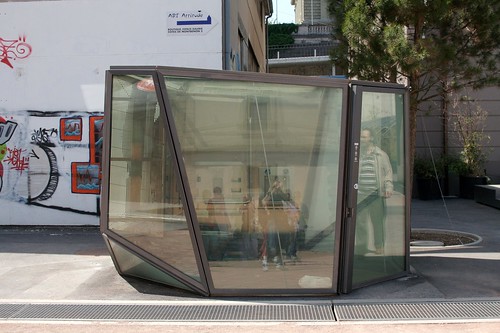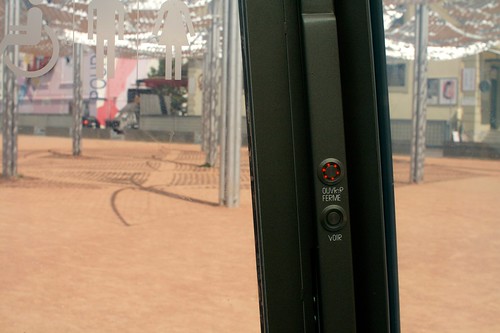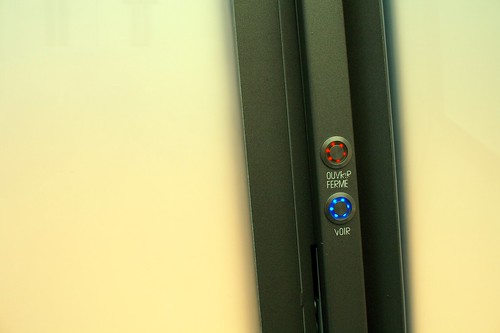 Another item I found curious while spending time in Lausanne the the other day: a see-through toilet. Based on a steel-and-glass architecture, the toilet is based on a transparent system: when pressing the "voir" button (which means "see"), the glass gets transparent and it turns opaque when someone is inside and presses the button again. A motion sensor also turn the glass transparent if there's no motion during a certain amount of time (to prevent people from staying there for too long or in case of a problem) OR if there is TOO MUCH ACTIVITY (no party is allowed in there).
Another item I found curious while spending time in Lausanne the the other day: a see-through toilet. Based on a steel-and-glass architecture, the toilet is based on a transparent system: when pressing the "voir" button (which means "see"), the glass gets transparent and it turns opaque when someone is inside and presses the button again. A motion sensor also turn the glass transparent if there's no motion during a certain amount of time (to prevent people from staying there for too long or in case of a problem) OR if there is TOO MUCH ACTIVITY (no party is allowed in there).
It's questioning as well to see that the button has been called "VOIR" ("see"), as most of the people who enter the toilet do not want to "see" but instead to "not be seen". My guess is that it's on purpose, to disrupt people's behavior (who would want to press a button anyway to see how to make the glass opaque).
From what I've read, the point is to find an answer the recurring problems of toilet trashing. By looking at the inside, people can have a direct overview of the toilet state. Designed by Oloom in 2008, the whole point of this is explained on their website:
"Eleven glass sides for this toilet whose walls are partly made of liquid cristal glass. Under electric tension, the glass is transparent and the toilet shows its clean and functional inside/interior: the user feels safe and sound. Out of tension, they become opaque: the place is now occupied and the users intimacy guaranteed. An innovative concept to deal with insecurity problems whilst playing with transparency."
An important feature in this design is the presence of a pine tree next to the transparent toilet. This tree has been especially chosen to be planted there because it's aimed at bringing more pleasant smell. A sort of high-tech/low tech combination.
Why do I blog this? An intriguing piece of furniture with curious combinations (the pine tree, the syringe trash can). Is this the Everyware-like city toilet of the future? I don't know but it's certainly interesting to understand more the way the glass gets transparent or opaque. The rules embedded in the system, that I described at the beginning of this post, tells us captivating insights about what is considered as normal or not in society.

